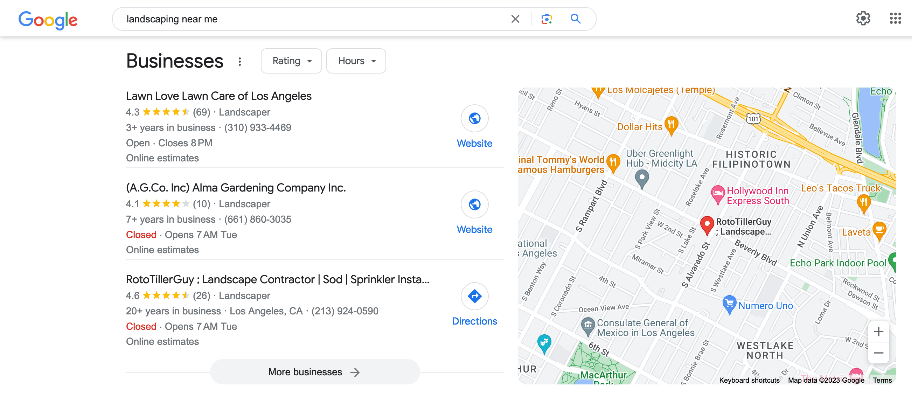
Getting page views means nothing if you aren’t converting. The goal of all SEO for lead generation projects (SEO = Search Engine Optimization) should be to generate more leads, especially quality leads. High conversion rates were simpler to achieve in the past; as the digital marketplace evolves and becomes more complex, you have to work a bit harder for your leads. The bar for getting quality SEO leads has been raised.
For instance, Google began mobile-first indexing in 2019, which means that it now prioritizes the mobile version of your website when indexing your web pages. If you haven’t optimized your site for mobile users, you are likely to get lower rankings. Another challenge is that, as more and more businesses move online, the level of competition increases.
Google’s search quality evaluator guidelines also place an emphasis on E-EAT (Experience, Expertise, Authoritativeness, Trust). This means that your rankings are affected by the quality of the information you put out and your authority on the subject. Therefore, you need to build a volume of informative content sharing first-hand knowledge on a topic with a consistent associated author bio on your blogs.
More businesses have become wiser when it comes to using SEO for lead generation, making it a bit harder to rank and generate quality leads. However, if you approach your SEO in the right manner, you can still outshine the competition. Want to generate better leads through SEO in 2024? Here are a few best practices that will boost your business:
Table of Contents
Claim and Optimize Local Listings
Local listings can be your new best lead generation tool. Since January 2021, over 46% of all Google searches have been local. Customers are always looking for businesses within their vicinity, and optimizing local listings could improve your search visibility. If you want to optimize your local SEO for lead generation, a Google Business Profile is an ideal listing to start with.

Google lets you include a lot of information on your profile, including NAP data (Name, Address, Phone) and current events as ‘Posts’ right on your listing within the SERPs. Optimizing your profile could help improve your rank on Google and make your business more discoverable on Google Maps. Other local listings worth following include Yelp, Glassdoor, Bing Maps, Apple Maps, Instagram Maps, and any industry-specific listings.
When optimizing your local listing, also consider setting up the chat feature on your Google Business Profile so that customers and leads can quickly and easily text you directly from Google search. This will boost customer satisfaction and retention as they get timely and individualized responses directly from you. There are a number of quote forms, calendar booking forms, and other features and integrations to take advantage of with your listing if you really want to stand out among the competition and offer the best experience possible for your leads.
The customer satisfaction and retention will then result in better SEO rankings and lead generation for your business.
The best part of optimizing these profiles is that they allow customers to share reviews of their experience with your business. Great reviews will help you earn the trust of customers trying to gauge your business’s reliability.
Create Detailed Buyer Personas
Buyer personas could easily help inform your SEO strategy for lead generation. A one-size-fits-all targeting strategy might not attract the level of quality leads you want. Take the example of a diaper company. Targeting parents as a whole is different from targeting parents who value environmental conservation. If you create content that shows how environmentally friendly your business is, you will appeal to the latter.

Such buyers are bound to come back, which means repeat business for you. A great place to start would be to research your typical customer’s psychographic data — that is, their behavior, attitudes, preferences, and values. You can then design the key elements of your website and content around this.
You don’t have to narrow down your content to appeal to a specific, niche demographic. The better SEO strategy for lead generation would be to dedicate specific parts of your website to specific customers. You can also hyper-personalize your website like Amazon and Netflix have done. Higher levels of personalization satisfy customers; 80% of consumers prefer to buy from a brand that offers personalized experiences.
Create Quality Content
Gone are the days when creating content for search engines was enough to generate SEO leads. Back then, businesses used to stuff blogs with keywords just to catch the attention of search engines. Such content was not designed to provide value to its audience. If you want to use SEO for lead generation today, creating quality content should be a priority. You need to find the right mix between writing for search engine bots and customers, but your priority should be delivering valuable content to customers.
When adding keywords to the content, make sure they appear naturally. Also, use the buyer personas you create in your content calendar to ensure your messaging is aligned with your ideal audience. Valuable content makes it easy to attract customers and eventually increase your conversion rates.
Be sure to vary the kind of content you put out there to maximize SEO for lead generation. Blog posts might be ideal for specific types of content, while video content will gather more engagement in other cases.
Implement Form Best Practices
Use forms with few fields to collect emails upfront so that if the user abandons the form, you still have some contact information you can use to follow up with instead of losing them entirely.
Keep the fields at a minimum by consolidating the first and last names, avoiding second address lines and optional information fields.
Try utilizing the auto-fill features so that you can save the time your leads take to fill in the forms. The auto-fill features used in Google Places API can also help your customers to autofill multiple shipping fields, which saves them a lot of time and reduces the chances of abandoning the form.
These practices will allow you to create a great user experience which will reduce the amount of traffic abandoning your site. This reduction will then indicate to the search algorithms that your site is highly relevant to the visitors which will in turn boost your ranking and bring you more leads.
Make Your Site Mobile-Friendly

How fast does your site content load? Does your site have inconsistencies between different mobile devices? Your bounce rate matters when it comes to turning site visitors into paying customers. If visitors are frustrated by your site being unresponsive or too slow on their devices, the chances are that they will leave for the competition.
Since over half of the world’s internet traffic comes from mobile devices, creating mobile-friendly sites is essential. Something as simple as images taking a long time to load could easily put off potential SEO leads. To maximize SEO for lead generation, be sure to:
- Optimize your site speed
- Reduce the number of pop-up ads you use
- Make font and CTA button sizes easy to interact with
- Embrace simple website design
- Make the navigation bar accessible
- Test your website on different devices
- Space touch elements far enough
Embrace Page Optimization
To ensure your website can be found, optimize your pages. This includes adding keywords to all relevant components of your pages:
- Titles
- URLs
- Meta titles
- Meta descriptions
- Content body
Ensure that there is a healthy mixture of long-tail and short-tail keywords throughout your web content. What you include in your meta descriptions matters when you’re trying to maximize SEO for lead generation. You want to urge customers to visit your website whenever they search online. Use engaging meta descriptions, and add relevant CTAs. This ensures you can get leads to visit your website in the first place.
Character count also matters when creating metadata. Limit meta titles to 50–60 characters and meta descriptions to 150–160 characters. If you exceed these numbers when writing the descriptions, the extra characters won’t be displayed on Google search result pages.
Consider Your Long-Term Success
The good thing about leveraging SEO for lead generation is that it can benefit you long-term, as long as you avoid common mistakes. When done right, SEO is a gift that won’t stop giving. However, you ought to set KPIs and keep measuring success if you want to generate a lot of SEO leads. Leverage both free and premium tools to maximize your efforts.
To learn how Coalition Technologies can help your business generate more leads in 2024 through SEO- call us today at (310) 827-3890 or contact us through this form and get a free marketing strategy review!

